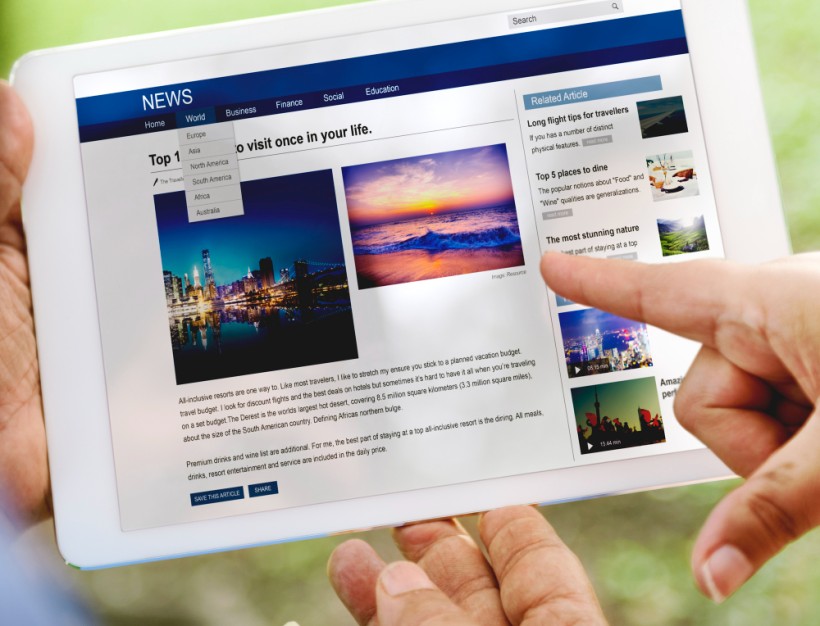1. Introduction
Between 2020 and 2025, the U.S. digital health landscape didn’t just expand — it reshaped. COVID-19 acted as both an accelerant and an equalizer, pulling forward adoption curves, testing the infrastructure of remote care, and reframing what constitutes a viable care experience.
Some of the changes were temporary. Many stuck. And the ripple effects have reshuffled priorities across capital, compliance, care delivery, and consumer behavior.
This article is written for revenue leaders, market-facing operators, and strategy teams tasked with navigating that reshuffling. Whether you’re a solution builder, a commercialization lead, or an investor trying to make sense of the noise, the next few sections aim to translate data into usable direction.
We’ll break down what the numbers suggest about:
- Where the market is consolidating — and where it isn’t
- What telehealth’s real staying power looks like
- How HIT adoption and security risks are shaping purchase criteria, and
- What patient behavior (and ad spend) reveals about future engagement strategies
This is a map of the indicators that matter most in shaping what comes next — for product strategy, growth planning, and finding traction in a more skeptical, more disciplined U.S. health market.
2. Market Momentum: The Shape of Digital Health Growth
2.1 The Size of the Prize
Depending on the source, the U.S. digital health market in 2022 was valued anywhere from $79 billion to over $133 billion [4][11]. By 2025, projections are estimated as high as $396 billion — globally, estimates top $400 billion [23][4].
That kind of spread isn’t just noise. It reflects differing definitions of “digital health,” varying inclusions of services vs. platforms, and divergent assumptions about CAGR across sectors.
For revenue leaders, what matters more than the headline is what’s underneath: which categories are seeing consistent purchasing momentum, and which are still stuck in pilot purgatory.
2.2 Where the Capital Went — and Didn’t
Venture funding peaked at $29 billion in 2021, then corrected sharply — falling to $10.1 billion in 2024 [26][24]. But that doesn’t mean capital disappeared. It just got more selective.
Deal volume shrank, but the average deal size ticked up again in Q1 2025 [10][21]. Late-stage deals saw renewed interest, signaling that investors aren’t done — they’re just recalibrating what “defensible” looks like.
For solution builders, the implication is clear: don’t expect your market TAM to do the selling. Show how your economics work today, not just in a scaled fantasy future.
2.3 Market Segmentation That Matters
Statista projects that by 2025, Digital Treatment & Care will account for over $34 billion in revenue — the largest U.S. subsegment [25]. Meanwhile, mHealth continues to claim the lion’s share by product type, and Services remains the dominant revenue driver by component [11].
This isn’t trivial. It shapes how buyers justify spend: they favor solutions that live inside workflows, generate revenue or reimbursement, or reduce manual load. What you see as engagement, they see as effort. What you see as personalization, they may see as complexity.
Segmentation matters, but perception drives prioritization.
3. Care Redefined: Telehealth and Its Staying Power
3.1 Adoption Surge — Then What?
Before 2020, fewer than one in five Americans had ever used telehealth [1]. By mid-2020, that number jumped to more than half — a dramatic, systemic pivot born of necessity [3].
Utilization eventually leveled off, but it never returned to pre-pandemic levels. In Q2 2020, mental health had the highest telehealth utilization rate at 65.5%, followed by endocrinology (55.5%) and geriatrics (55.2%) [9]. Meanwhile, ASPE reported that 92% of Medicare patients who used telehealth received care from their homes during that period [3].
On the provider side, what began as a workaround evolved into a mainstay. Surveys from 2021 and 2022 showed that three out of four physicians incorporated some form of telehealth into their practice [20].
Still, the growth wasn’t uniform — rural usage lagged (27.5%), engagement among adults aged 65 and over was 42.5%, and reimbursement uncertainty cooled expansion in some specialties [6].
3.2 Reimbursement Drives Reality
Telehealth’s staying power isn’t just a function of convenience — it’s downstream of policy. During the public health emergency, Medicare removed location-based restrictions, greenlit audio-only visits, and ensured parity reimbursement [3][16].
Many of these flexibilities have since been extended through September 2025 [29]. But without further legislative action, they could expire after that.
This looming policy cliff introduces strategic hesitation for health systems and vendors alike. Should they scale permanent infrastructure, or hedge their bets? Until Congress acts, or CMS commits to long-term reimbursement policy, much of telehealth’s future hinges not on user demand, but on legislative follow-through.
3.3 Sentiment Check: Still Worth the Spend?
Patients continue to show high satisfaction with virtual care, especially when it reduces travel time or waiting room friction. More than 80% say they’d use it again [20]. But satisfaction doesn’t always mean utilization — especially if providers find the workflows cumbersome or if reimbursement feels uncertain.
On the provider side, most surveys show favorable attitudes — but also reveal lingering concerns about fragmented documentation, clinical appropriateness, and long-term ROI.
In 2021, satisfaction with telemedicine technology varied by specialty — 65.5% of primary care physicians, 63.6% of medical specialists, and 49.5% of surgical specialists reported being satisfied [7].
Still, the signal is this: where telehealth aligns with value (chronic care, behavioral health, post-discharge follow-up), it isn’t just surviving. It’s being integrated. Which suggests that telehealth’s most sustainable future isn’t about replacing visits — it’s about extending the visit’s reach.
4. Consumer Behavior and Mobile Health
4.1 The Rise of mHealth: Not Just Steps and Sleep
Mobile health — broadly including wearables, fitness apps, and connected devices — has become one of the most recognizable faces of digital health. By 2024, over 40% of U.S. adults reported using health or fitness apps [31]. Wearable usage jumped from about 33% circa 2020 to 43% about a year later [15].
But this isn’t just about step tracking or sleep scores anymore. Many of these devices now support clinical-grade monitoring — blood oxygen, heart rhythm, even glucose trends — blurring the line between consumer wellness and clinical utility.
What often gets overlooked: physicians are becoming mHealth users too. A JMIR publications study shows that many physicians now use mobile apps for communication, clinical decision-making, medical education, and drug reference, though concerns about privacy and liability remain [18].
That behavior shift matters. It shortens the gap between consumer-led engagement and clinician-led care, potentially setting the stage for more integrated, coordinated digital experiences.
4.2 Fitness Apps and Real Engagement Gaps
Still, there’s a gap between installs and impact. The majority of health app users churn within the first month, with only 3.4% still active by day 30, highlighting the challenge of achieving lasting behavior change[30]. Engagement doesn’t always equal improvement — and outcomes still depend on sustained, guided use.
That said, some categories are showing stickier patterns: weight management, chronic condition tracking, and mental health support apps tend to retain users longer, especially when paired with coaching or care team oversight.
For digital health builders, the message is clear: showing up on a user’s home screen isn’t enough. Value has to compound. The most effective solutions are those that support specific interventions, connect to broader care models, or tie directly to an outcome that matters — to the user, to the clinician, or to the payer.
5. Where Healthcare Markets Spend Online
U.S. pharmaceutical digital ad spending was projected to reach $19.45 billion in 2024—nearly 90% of the healthcare and pharma sector’s total. That marks significant growth over recent years and is expected to rise further to $21.62 billion in 2026, according to eMarketer [28].
In a market saturated by high-budget pharma ads, digital health companies often face a visibility ceiling — not because their solutions aren’t credible, but because their messages are crowded out by louder, better-funded campaigns.
For operators and commercial leads, this reshapes the calculus. It means understanding that the buyer’s digital ecosystem is already noisy. Paid ads are one tactic — not a strategy. Peer channels, clinical proof points, and economic case studies are often more effective for market access than yet another LinkedIn awareness campaign.
In short: you’re not just competing against other startups. You’re competing against brands with $16 billion to spend.
6. HIT Infrastructure: Adoption, Risk, and AI Readiness
6.1 EHRs and HIEs: Penetration vs. Usability
By 2023, 96% of U.S. non-federal acute care hospitals had adopted certified EHR technology, and 88% of office-based physicians had adopted some form of EHR by 2021 [17]. On paper, that’s near-universal coverage.
But functionally, many systems still face significant gaps. Usability lags — especially in data retrieval and clinical workflow integration. About 75% of hospitals join HIEs, but only 35% participate in both HIEs and national networks—leaving consistent, actionable data sharing a challenge. [32].
Interoperability is often better within a single EHR vendor ecosystem (e.g., Epic-to-Epic) than across vendors, limiting broader population health and analytics efforts.
6.2 Security Breaches Are the New Normal
From 2020 to 2024, large healthcare data breaches (500+ records) climbed from 663 to 734 incidents annually. The volume of records exposed rose even faster — from under 50 million in 2020 to over 250 million in 2024 [14].
The root cause? Hacking and IT incidents, which consistently account for the majority of breaches. For CIOs and CISOs, this shifts security from a compliance checkbox to a strategic risk posture. Any digital health vendor entering the space must assume their solution is a new endpoint — and prove that it doesn’t introduce new vulnerabilities.
6.3 AI in Healthcare: Growing Spend, Growing Questions
The global AI in healthcare market reached $26.7 billion in 2024, with the U.S. market accounting for $8.41 billion of that total [13]. Projections for 2025 vary — GlobeNewswire estimates $36.96 billion globally, while Fortune Business Insights puts it at $39.25 billion [12][13].
But market size isn’t the issue. It’s deployment maturity. Most health systems are still evaluating — not scaling — AI solutions. The question isn’t whether they’re interested. It’s whether they’re ready.
For solution builders, this creates an opening — but also a caution: AI features that don’t tie directly to clinical or operational ROI will stay in the pilot phase. And in a post-2021 funding climate, “AI-enabled” isn’t a differentiator — it’s a claim that needs to be proven, not just promised.
7. Spotlight on Adjacent Growth Vectors
7.1 Remote Patient Monitoring (RPM)
The U.S. RPM market reached $13.4 billion in 2022 [2] and is projected to grow significantly in the coming years, with global estimates ranging from $27.7 billion to $39.54 billion by 2024 [19][5].
But the presence of CPT codes hasn’t fully translated to seamless adoption. Friction points remain — particularly around integration into EHR workflows and care team staffing models.
Medicare’s RPM codes (e.g., 99453, 99454, 99457) reimburse for setup, device supply, and management time, but providers still struggle to operationalize these services at scale.
For vendors, the opportunity lies in simplifying that operational lift and proving both short-term billing lift and long-term outcomes.
7.2 Digital Therapeutics (DTx)
DTx continues to draw attention for its clinical promise, but adoption has lagged. The U.S. market reached $3.02 billion in 2024 [22], with estimates pointing to $4.5 billion by 2025 [27], and another projection places it even higher, at $5.02 billion by 2025 [8].
Still, only about 30% of potential users engage with DTx tools [27], despite expanding use cases in mental health, diabetes, and chronic pain. The real acceleration may come from pharma partnerships — where DTx is positioned as a value-added companion to medication — and from payer pilots seeking to reduce medication spend. But the burden remains on DTx companies to show measurable impact, not just promise.
7.3 Consumer Skepticism (Pre-COVID Baseline)
Accenture’s 2020 survey, based on 2019 data, showed a digital trust divide: while 83% of consumers trusted their provider with digital health data, only 45% trusted technology companies. Privacy concerns were the top barrier for 38% of respondents. Just 19% had used virtual care — though 54% were open to it [1].
Those numbers shifted dramatically during the pandemic, but the baseline matters. It reminds us that adoption can spike due to necessity — but sustaining trust and long-term engagement requires design choices that reflect those early hesitations: control, clarity, and care coordination.
8. Final Takeaways for Operators and Builders
Digital health is not one market. It’s a constellation of overlapping categories — each with different buyers, incentives, and adoption curves. What that means in practice: growth rarely follows a straight line. It follows a budget, a policy shift, or a workflow friction point finally too costly to ignore.
The clearest throughline across the 2020–2025 window? Reimbursement. Solutions that align with how providers get paid — today, not in theory — have a structural advantage. CPT codes, MIPS incentives, ACO benchmarks, readmission penalties: these aren’t side considerations. They’re the budget logic that determines whether a solution moves forward or stalls out.
Success today tends to follow a three-part equation:
- Sustained engagement from the user or clinician
- Billable or measurable activity tied to the solution
- Budget justification that matches how the buyer defines risk
When all three line up, buyers can move confidently. When even one is missing, deals stall — not because the solution isn’t valuable, but because it doesn’t look valuable enough from where the buyer sits.
References
[1] Accenture – Digital Health Consumer Survey 2020 – US Findings: https://www.accenture.com/content/dam/accenture/final/a-com-migration/pdf/pdf-130/accenture-2020-digital-health-consumer-survey-us.pdf
[2] Arizton – U.S. Remote Patient Monitoring Market: https://www.arizton.com/market-reports/us-remote-patient-monitoring-market
[3] ASPE – Medicare Telehealth Trends Report: https://aspe.hhs.gov/sites/default/files/documents/a1d5d810fe3433e18b192be42dbf2351/medicare-telehealth-report.pdf
[4] BioSpace / Precedence Research – Digital Health Market: https://www.biospace.com/press-releases/digital-health-market-set-to-surge-to-usd-1-093-65-billion-by-2034-says-precedence-research
[5] Business Wire / ResearchAndMarkets – RPM Market Insights: https://www.businesswire.com/news/home/20241128873389/en/Remote-Patient-Monitoring-Market-Insights-2024-2029—Integration-of-AI-in-Remote-Patient-Monitoring-Surge-in-Demand-for-RPM-Technology-and-Growing-Use-of-Mobile-Technologies-and-Smart-Devices-in-RPM—ResearchAndMarkets.com
[6] CDC NCHS Data Brief No. 445: https://www.cdc.gov/nchs/products/databriefs/db445.htm
[7] CDC NCHS Data Brief No. 493: https://www.cdc.gov/nchs/products/databriefs/db493.htm
[8] Coherent Market Insights – U.S. DTx Market: https://www.coherentmarketinsights.com/market-insight/us-digital-therapeutics-market-5690
[9] Epic Research – Telehealth Utilization: https://www.epicresearch.org/articles/telehealth-utilization-higher-than-pre-pandemic-levels-but-down-from-pandemic-highs
[10] Fierce Healthcare – Digital Health Funding Q1 2025: https://www.fiercehealthcare.com/digital-health/digital-health-startups-raise-3b-q1-market-faces-uncertainty-rock-health
[11] Fortune Business Insights – U.S. Digital Health Market: https://www.fortunebusinessinsights.com/u-s-digital-health-market-108744
[12] Fortune Business Insights – AI in Healthcare: https://www.fortunebusinessinsights.com/industry-reports/artificial-intelligence-in-healthcare-market-100534
[13] GlobeNewswire / Precedence Research – AI in Healthcare: https://www.globenewswire.com/news-release/2025/04/02/3054390/0/en/Artificial-Intelligence-AI-in-Healthcare-Market-Size-to-Hit-USD-613-81-Bn-by-2034.html
[14] HIPAA Journal – Healthcare Data Breach Statistics: https://www.hipaajournal.com/healthcare-data-breach-statistics/
[15] Medical Device Network – The next phase for medical wearables
https://www.medicaldevice-network.com/features/the-next-phase-for-medical-wearables/#:~:text=In%20their%20survey%20of%20nearly%208%2C000%20US%20adults%2C%2043%25%20of%20respondents%20said%20they%20owned%20a%20wearable%2C%20up%20from%2033%25%20the%20year%20before.
[16] KFF – Medicare Coverage of Telehealth: https://www.kff.org/medicare/issue-brief/what-to-know-about-medicare-coverage-of-telehealth/
[17] Market.us Media – EHR Industry Statistics: https://media.market.us/ehr-industry-statistics/
[18] JMIR Publications – U.S. Physicians’ use of smartphones and apps in practice: https://mhealth.jmir.org/2023/1/e44765#:~:text=Conclusions%3A,professionals%20using%20smartphones.
[19] MarketsandMarkets – RPM Market: https://www.marketsandmarkets.com/Market-Reports/remote-patient-monitoring-market-77155492.html
[20] Mastermind Behavior – Telehealth Statistics: https://www.mastermindbehavior.com/post/telehealth-statistics
[21] MedTech Dive – Digital Health Q1 2025: https://www.medtechdive.com/news/digital-health-funding-q1-2025-late-stage-deal-rebound-rock-health/744855/
[22] Precedence Research – U.S. DTx Market: https://www.precedenceresearch.com/us-digital-therapeutics-market
[23] Research and Markets – U.S. Digital Health Market: https://www.researchandmarkets.com/report/united-states-digital-health-market?srsltid=AfmBOoqB1lH1D-Nw0nzAT8EmacV7g80ZJ3_ibkil_h_HD_cDv4mOnKJ-
[24] Rock Health – 2024 Year-End Overview: https://rockhealth.com/insights/2024-year-end-market-overview-davids-and-goliaths/
[25] Statista – U.S. Digital Health Market Forecast: https://www.statista.com/outlook/hmo/digital-health/united-states
[26] Statista – Digital Health Venture Funding: https://www.statista.com/statistics/1290791/digital-health-venture-funding-in-the-us/
[27] Statista – Digital Therapeutics Market Forecast: https://www.statista.com/outlook/hmo/digital-health/digital-treatment-care/digital-therapeutics/united-states
[28] eMarketers – Pharma Digital Ad Spend: https://www.emarketer.com/content/pharma-accounts-nearly-90-of-broader-industry-digital-ad-spending
[29] (CMS) MLN Booklet – Telehealth & RPM : https://www.cms.gov/files/document/mln901705-telehealth-remote-patient-monitoring.pdf
[30] Statista – Mobile App Users Retention: https://www.statista.com/statistics/259329/ios-and-android-app-user-retention-rate/
[31] Morning Consult – Health Apps and Wearables Usage: https://pro.morningconsult.com/trend-setters/use-of-digital-health-apps-wearables-growing#:~:text=40%25%20of%20U.S.%20adults%20said%20they%20use%20health%20applications%2C%20and%20another%2035%25%20use%20wearables%2C%20both%20up%20from%20late%2D2018%20surveys
[32] ASTP – Interoperability & Methods of Exchange among Hospitals: https://www.healthit.gov/data/data-briefs/interoperability-and-methods-exchange-among-hospitals-2021#:~:text=About%20three%2Dquarters%20of%20hospitals%20participate%20in%20health%20information%20exchange%20organizations%20(HIEs)%20and%20about%2035%20percent%20participate%20in%20both%20HIEs%20and%20national%20networks





